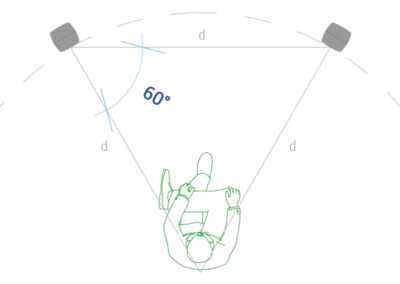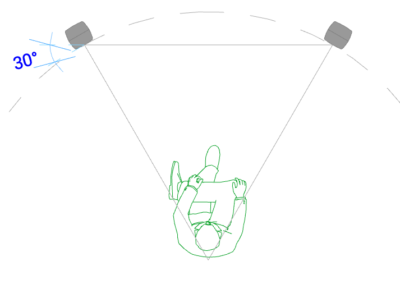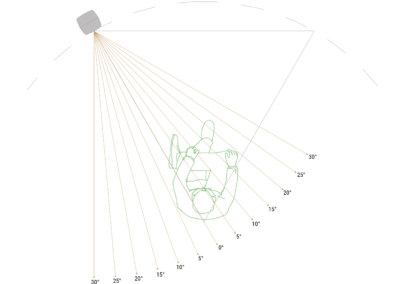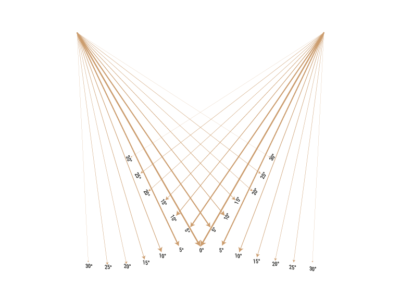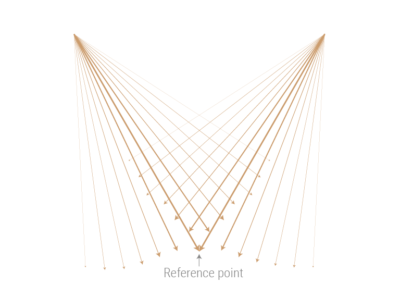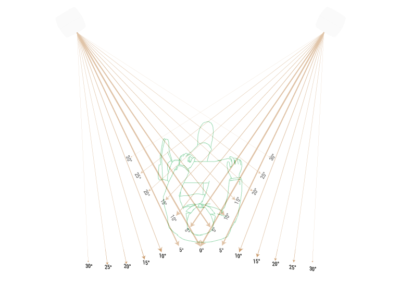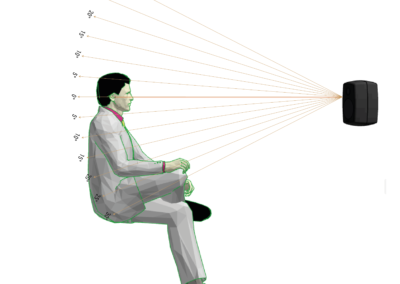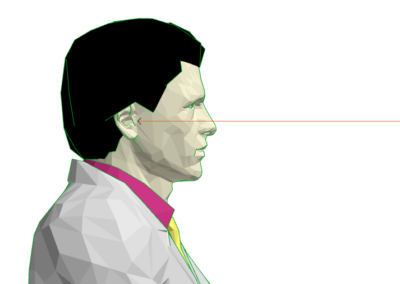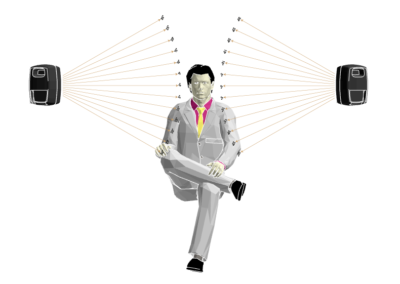Stereo speakers positioning
How to setup properly your speakers and listening position?
A critical listening room is an acoustic space for neutral sound reproduction.
Sound is measured at two points in space (measurement microphone positioned at left ear and right ear), and heard at two points in space (left ear and right ear).These two points are part of a larger listening area, the so-called ‘sweet spot’.
How big that optimal listening area is depends on many factors: room’s dimension, adjacent walls, speakers’ design (On and Off-axis frequency responses, polar response etc), distance d (as defined below), etc…and of course, room acoustics.
Based on experiences, speakers manufacturers, AES, EBU and ITU documentations (AES20, EBU Tech. 3276, ITU BS.1116-3), here is a sum-up of my recommendations for most of 2-way and 3-way speakers.
- The distance between the two speakers (left speaker and right speaker) is measured from their acoustic–centers : left speaker’s acoustic-center to right speaker’s acoustic-center. That distance is called d in the following illustrations.
The triangle formed by the 2 speakers and the reference–point located behind your head is an equilateral triangle. - Speakers are rotated of +/-30° to be perfectly on-axis (0° incidence signal from speakers).
NB : that reference-point is exactly where 0° incidence signals from left-speaker and right-speaker meet (only true when speakers are toed in/out of 30°!). - Listening position is within that triangle and is specific to each person (head-related transfer function), but between 40 to 30cm (16″ to 12″) forward the reference-point.
- Speakers’ height (measured from floor to acoustic-center) should be at 1m20/47,3″ minimum.
- Acoustic-center (and not tweeter!) at ears’ height.
- Do not angle your speakers on vertical axis, or maximum 5° if you have to do it.
NB: Points 1 to 3 are about horizontal axis, 4 to 6 points are about vertical axis.
This triangle is a very small part of an overall studio design and has to be perfectly located within the room and does not depend on speaker-mounting method.
To illustrate some points, please refer to drawings below.
Hope it helps! and feel free to contact me if you have any questions or remarks regarding this article.
Jean-Pierre B.
Acoustic Designer

